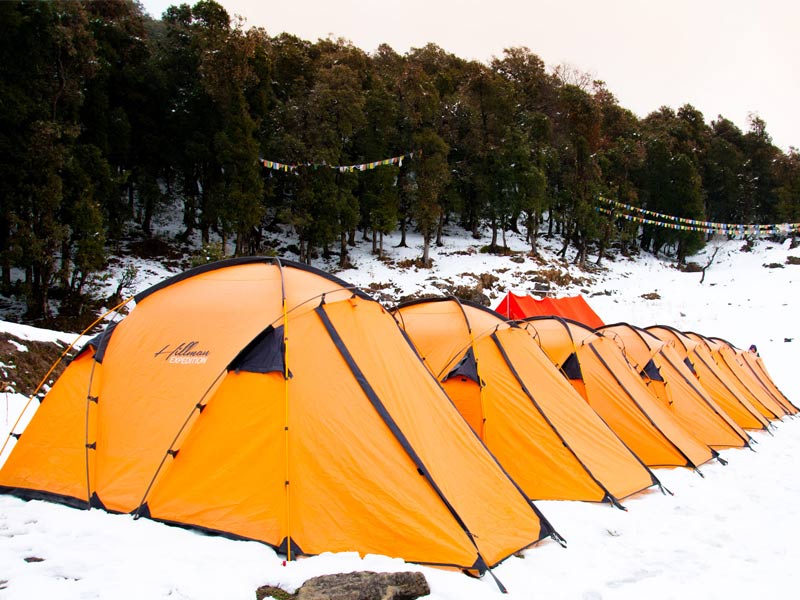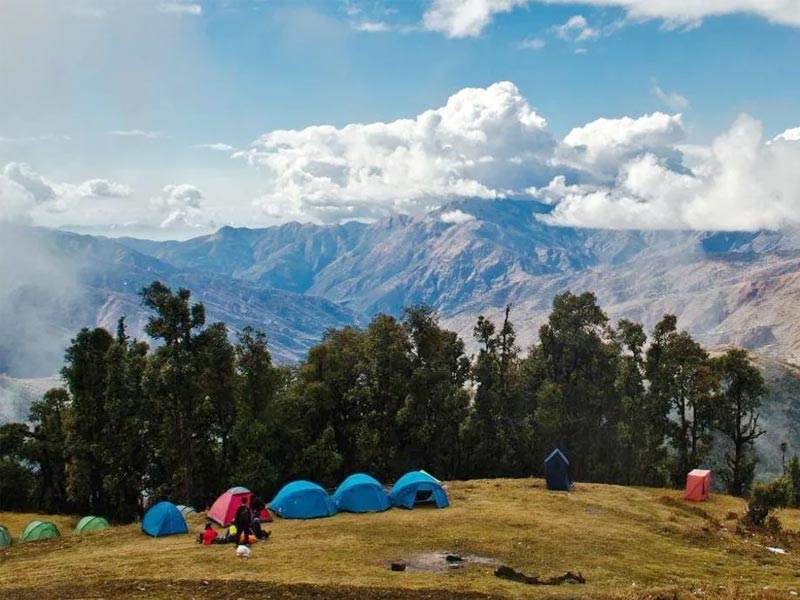Nag Tibba trek is one of the highest treks in India. Nag means snake in Hindi, and Nag Tibba means Serpents Peak. It is the highest peak in the lower Himalayas of the Garhwal region near Mussoorie. The range gets its name from the Nag Tibba peak itself. Nag Tibba is one of the three ranges of the Lesser Himalayas. The trek is among the best treks in the country. Located at an altitude of 3025 meters, the Nag Tibba trek is a heaven for adventure lovers.
How to reach?

The best way to start the Nag Tibba trek is to reach Dehradun from Delhi, just a few hours away from the national capital. The trek can be completed in 2 to 3 days which includes the travel from Delhi.
The trek is an easy to moderate level trek. You can complete this with minimum difficulty even if you are a beginner. You will come across a dense forest cover, breathtaking views of the Himalayas, majestic waterfalls, picturesque meadows, and snow-laden peaks.
The trek is very close to Mussoorie and Dehradun and is considered one of the safest treks in the country. Natural disasters like landslides are a very rare phenomenon here.
Also Read, Hampta Pass: A Dramatic Trek, through Blissful Mountains
Three trekking routes can be used to climb the Nag Tibba peak.
Route 1: The distance of this route is nearly 13 km. This trek starts from Devalsari and goes up to the Nag Tibba top 3 km from the Forest Guest House. You can also stay at the Forest Guest House to take a rest. You get a bird’s eye view of the entire region from the Nag Tibba Top. You’ll come across the thick deodar forest during the summit. There are several isolated places where you can click amazing pictures and enjoy a few moments of peace.
Route 2: The second route starts from Pantwari village. It is the most common route used to climb the top. This village is located just 50 km away from Mussoorie. The length of the route is just 8 km, and it is one of the shortest paths to reach the Nag Tibba top. One can climb the top in just a few hours. The entire route is full of scenic landscapes, picturesque meadows, and lush green valleys.
Route 3: The third route is motorable. This route goes via Thatyur, and it goes all the way up to the bridle path near Aunter. One can walk to the ridge top using this route after reaching Thatyur via their vehicle. The route from Aunter is relatively straight and easy to climb.
You can divide this trek into three days to get enough rest and enjoy the trek and the magnificent sceneries that come across you. While the trek can be completed in 2 days, if you are an experienced trekker, it’s advisable to have three days in your plan.
On the first day, you can reach Pantwari from Dehradun and trek to Base Camp.
On the second day, you can climb to the Nag Tibba top from the Nag Tibba temple, enjoy the view of the glorious mountain ranges and return to the Nag Tibba base camp later.
The next day, you can trek back to Pantwari village and head back to your place from there.
When one hears of Nag Tibba, trekking is the first word that comes to their mind. However, there are several other adventurous activities that you can take part in while exploring this mountain range.

Camping in the lap of mother nature on the hilly range is among the most common activities to enjoy in Nag Tibba. There’s a different charm in camping under the clear sky and enjoying the glorious view of the nearby regions with your friends.
You can also hone your photography skills while at Nag Tibba, one of the most picturesque places in the state. If you are lucky enough to witness a clear night sky, you can capture some mesmerizing star trails and the natural light of the Milky Way.
Also Read, The Kashmir Great Lakes Trek – The Uncharted Beauty of Kasmir
Where to Stay?

There aren’t any staying options at Nag Tibba Peak. You will have to set your tents at the Nag Tibba base camp to stay the night. While you can get all the equipment necessary for camping by the trek operators, it is better to carry your own camping equipment to avoid any discomfort.
There are a few guesthouses at Devalsari and Pantwari on both routes where you can stay for a budget. You can also stay at the Forest Rest House at the trek base camp, but you will have to take permission from the Mussoorie Forest Officer for that.
Also, there are no eateries or food stalls at the Nag Tibba top. It is always advisable to carry your own food supplies for refueling yourself. You should carry packaged food and some light snacks on your way up the peak.




























